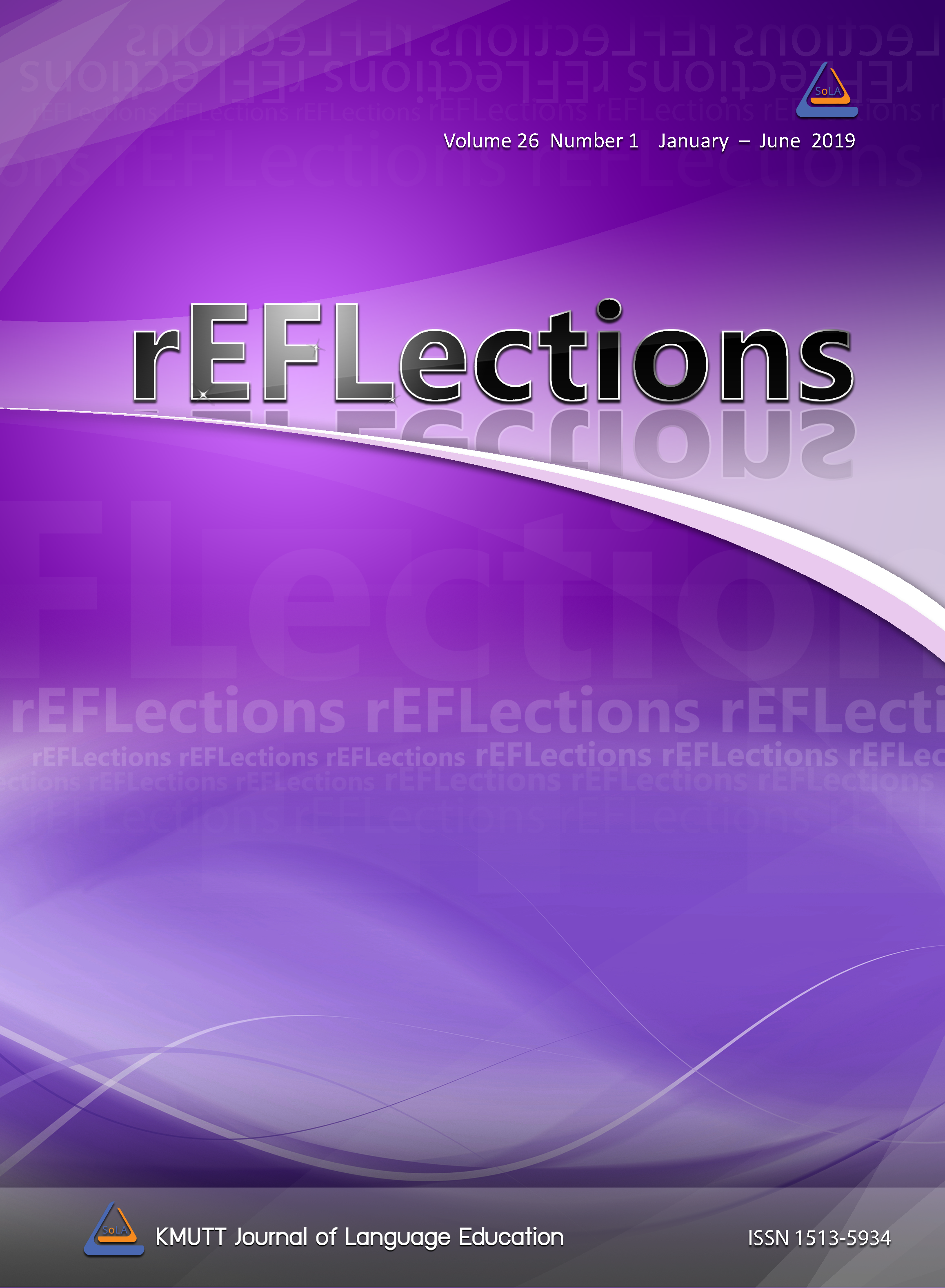Developing Intercultural Awareness in ELT: Students’ Attitudes toward their Intercultural Learning Experience
Main Article Content
Abstract
This study aimed at investigating students’ attitudes toward their intercultural learning experience to develop intercultural awareness in an English language classroom. The participants were a group of 31 students at tertiary level. They registered for an elective English course, the objective of which was to prepare students for job application, job interview and working effectively in multicultural contexts. A set of teaching and learning materials intended to develop intercultural awareness was especially designed and integrated into the existing English course. A survey questionnaire, reflective writing, self-assessment forms, and semi-structured interviews were used to collect the data. The results showed that the participants had highly positive attitudes toward their intercultural learning experience in various aspects, but still were hesitant with the overall ideas of an incorporation of intercultural components into an English course.
Article Details
References
Agar, M. (1995). Langauge shock: Understanding the culture of conversation. New York, NY: William Morrow and Co.
Anantapol, W. (2009). English for Employment. An in-house text book of Department of Foreign Languages, Faculty of Humanities, Kasetsart University.
Baker, W. (2009). Intercultural awareness and intercultural communication through English: An investigation of Thai English language users in higher education. (Unpublished doctoral dissertation). University of Southampton, Southampton, United Kingdom. Retrieved 26 February, 2014, from https://eprints.soton.ac.uk
Baker, W. (2011). Intercultural awareness: Modeling an understanding of cultures in intercultural communication through English as a lingua franca. Language and Intercultural Communication, 11(3), 197-214.
Baker, W. (2015). Research into Practice: Cultural and intercultural awareness. Language Teaching, 48(1), 130-141
Bakhtin, M. (1986). Speech genres and other late essays (McGee, V., Trans.) Austin, Tx: Texas University Press.
Barrett, et al., (2013). Developing intercultural competence through Education. Strasbourg, France: Council of Europe.
Bennett, M.J. (1986). A developmental approach to training for intercultural sensitivity. International Journal of Intercultural Relations, 10, 179-196.
Byram, M. (1997). Teaching and assessing intercultural communicative competence. Clevedon, United Kingdom: Multilingual Matters.
Canagarajah, A.S. (2013). Translingual practice: Global Englishes and cosmopolitan relations. New York, NY: Routledge.
Candel-Mora, M.A. (2015). Attitudes towards intercultural communicative competence of English for specific purposes students. Procedia-Social and Behavioral Sciences, 178, 26-31.
Chen, G.-M., & Starosta, W.J. (1996). Intercultural communication competence: A synthesis. Annals of the International Communication Association (formerly Communication Yearbook 19), 19, 353-383.
Corbett, J. (2010). Intercultural language activities. Cambridge, United Kingdom: Cambridge University Press.
Halliday, M.A.K. (1979). Language as social semiotic: The social interpretation of language and meaning. London, United Kingdom: Edward Arnold.
Hunter, B., White, G.P., & Godbey, G.C. (2006). What does it mean to be globally competent? Journal of Studies in International Education ,10(3), 267-285.
Hyme, D. (1972). On communicative competence. In J. Pride & J. Holms (Eds.), Sociolinguistics (pp.269-293). Harmondsworth, United Kingdom: Penguin.
Jandt, F.E. ( 2013). An Introduction to Intercultural Communication: Identities in a Global Community (7th ed.). Thousand Oaks, CA: SAGE Publication, Inc.
Kohls, L.R., & Knight, J.M. (1994). Developing intercultural awareness: A cross-cultural training handbook (2nd ed.). Yarmouth, ME: Intercultural Press.
Kramsch, C. (1993). Context and culture in language teaching. Oxford, United Kingdom: Oxford University Press.
Kramsch, C. (2006). From communicative competence to symbolic competence. Modern Language Journal, 90(2), 249-252.
Moeller, A.J., & Nugent, K. (2014). Building intercultural competence in the language classroom. Faculty Publications. Department of Teaching, Learning, and Teacher Education. 161. https://digitalcommons.unl.edu/cgi/viewcontent.cgi?article=1160&context=teachlearnfacpub
Moran, P.R. (2001). Teaching Culture: Perspectives in Practice. Florence, KY: Cengage Learning.
Phongsirikul, M. (2017). A learner of the 20th century becoming a teacher of the 21st century: A perspective on the goals of ELT in Thailand. rEFLections, 24(1), 81-94.
Risager, K. (2005). Languaculture as a key concept in language and culture teaching. Retrieved from http:www.ruc.dk/isok/skriftserier/mobility/
Risager, K. (2007). Language and culture pedagogy. Clevedon, United Kingdom: Multilingual Matters.
Snodin, N.S. (2015). Rethinking culture teaching in English language programme in Thailand. RELC Journal, 47(3), 1-12.
Tomalin, B., & Stempleski, S. (1993). Cultural awareness. Oxford, United Kingdom: Oxford University Press.
Wongsothorn, A., Hiranburana, K., & Chinnawongs, S. (2003). English language teaching in Thailand today. In H. Wah Kam & R. Wong (Eds.), English language teaching in East Asia Today: Changing policies and practices (pp.441-453). Singapore: Eastern University Press.
Young, T.J., & Sachdev, I. (2011). Intercultural communicative competence: Exploring English language teachers’ beliefs and practices. Language Awareness, 20(2), 81-98.


